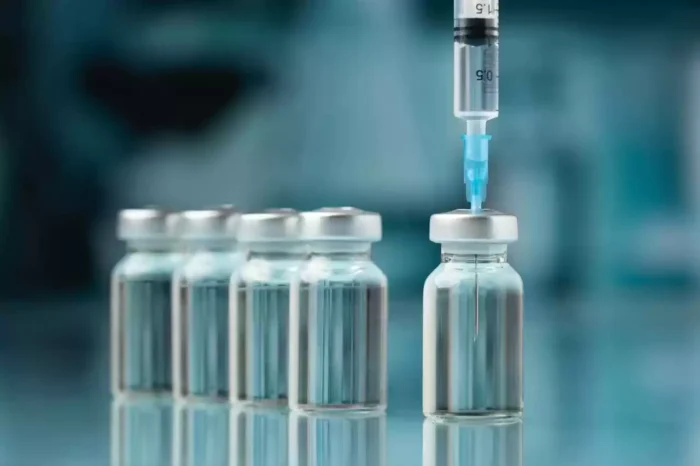
A research peptide known as PT-141, also known as Bremelanotide, is now being investigated for the possibility that researchers might use it to assist in the context of sexual dysfunction.
PT-141 was developed from the tanning peptide Melanotan 2, a variant of a peptide hormone naturally produced in the organism known as an Alpha-Melanocyte stimulating hormone. This hormone is responsible for stimulating melanogenesis. Synthetically produced Melanotan 2 is a variant of the alpha-melanocyte stimulating hormone.
While exerting its impacts, MSH is responsible for activating a subset of melanocortin receptors. MSH has significantly impacted lipid metabolism, hunger, and sexual drive. Consequently, PT-141 has been suggested in tests to display libido-enhancing impacts via activating the melanocortin receptors MC1R and MC4R, even though it does not cause skin tanning.
Because of their melanogenesis-stimulating capabilities, Melanotan 1 and Melanotan 2 have also been studied to see if they may be used as protection against the potentially damaging impacts of UV radiation from the sun.
The Beginnings of PT-141
Melanotan 2 peptide was tested as a tanning agent before PT-141 was developed, derived from that peptide. Studies suggest that Melanotan 2 did appear to cause tanning during the first round of testing. Still, as an unanticipated effect, it also seemed to have generated sexual excitation and spontaneous erections in nine out of ten of the original male test models.
Primary data analysis and presentation of top-line findings occurred in the first part of the fourth quarter 2012. Studies have suggested that PT-141 may be a successful agent in the context of erectile dysfunction (also known as impotence) and other forms of sexual dysfunction in male and female research models (sexual arousal disorder).
PT-141 Peptide: Energy Homeostasis
One of the intriguing areas of PT-141 research is its potential impact on energy homeostasis. Investigations purport that melanocortin signaling is critical for maintaining energy balance within the organism. By binding to MC4R, PT-141 might modulate appetite and energy expenditure, suggesting a possible role in managing metabolic disorders. While the exact mechanisms remain fully elucidated, it is hypothesized that PT-141 could influence the hypothalamic pathways involved in hunger and satiety, thereby contributing to weight regulation.
PT-141 Peptide: Pigmentation

Melanocortin receptors are well-known for their role in pigmentation. Alfa-MSH, the parent molecule of PT-141, stimulates melanocytes to produce melanin, leading to skin darkening. PT-141’s interaction with these receptors suggests that it might similarly affect melanogenesis. This property could have potential applications in conditions related to pigmentation abnormalities. However, more research is needed to determine the exact impact of PT-141 on melanogenesis and its potential utility in research settings.
PT-141 Peptide: Inflammatory Processes
Melanocortin peptides are also known to possess anti-inflammatory properties. By interacting with melanocortin receptors, PT-141 might influence inflammatory pathways, suggesting potential applications in inflammatory conditions. The peptide’s potential to modulate immune responses and reduce inflammation is an active research area. Understanding how PT-141 may affect these processes could lead to new insights into managing autoimmune and inflammatory diseases.
PT-141 Peptide: Future Research Directions
The diverse range of potential properties attributed to PT-141 positions it as a molecule of significant interest for future research. Its potential to interact with multiple melanocortin receptors suggests a multifaceted mechanism of action that could be leveraged in various contexts. While much remains to be understood, the ongoing exploration of PT-141’s possible impacts on energy homeostasis, pigmentation, sexual function, and inflammation reveals new possibilities.
PT-141 Peptide: The Metabolism

Given the peptide’s potential influence on energy balance, future research might focus on its role in metabolic disorders. Understanding how PT-141 may modulate appetite and energy expenditure could pave the way for new approaches to obesity and related conditions. Investigations into the peptide’s long-term impacts on metabolism and weight regulation will determine its viability.
PT-141 Peptide: Dermatology
The potential impacts of PT-141 on pigmentation suggest possible applications in dermatology. Approaches that modulate melanogenesis could aid conditions such as vitiligo and hyperpigmentation. Future studies might explore the potential of PT-141 in altering skin pigmentation and its use in cosmetic or restorative research.
Buy PT-141 Peptide
Because Core Peptides has developed a strong customer support team that monitors the whole sales process, many customers can take advantage of the excellent pre-sale and after-sale assistance. The Core Peptides support staff always follows the guidelines provided. The crew is always ready to assist you, address any issues with returns and replacements, and respond to any concerns that you may have.














